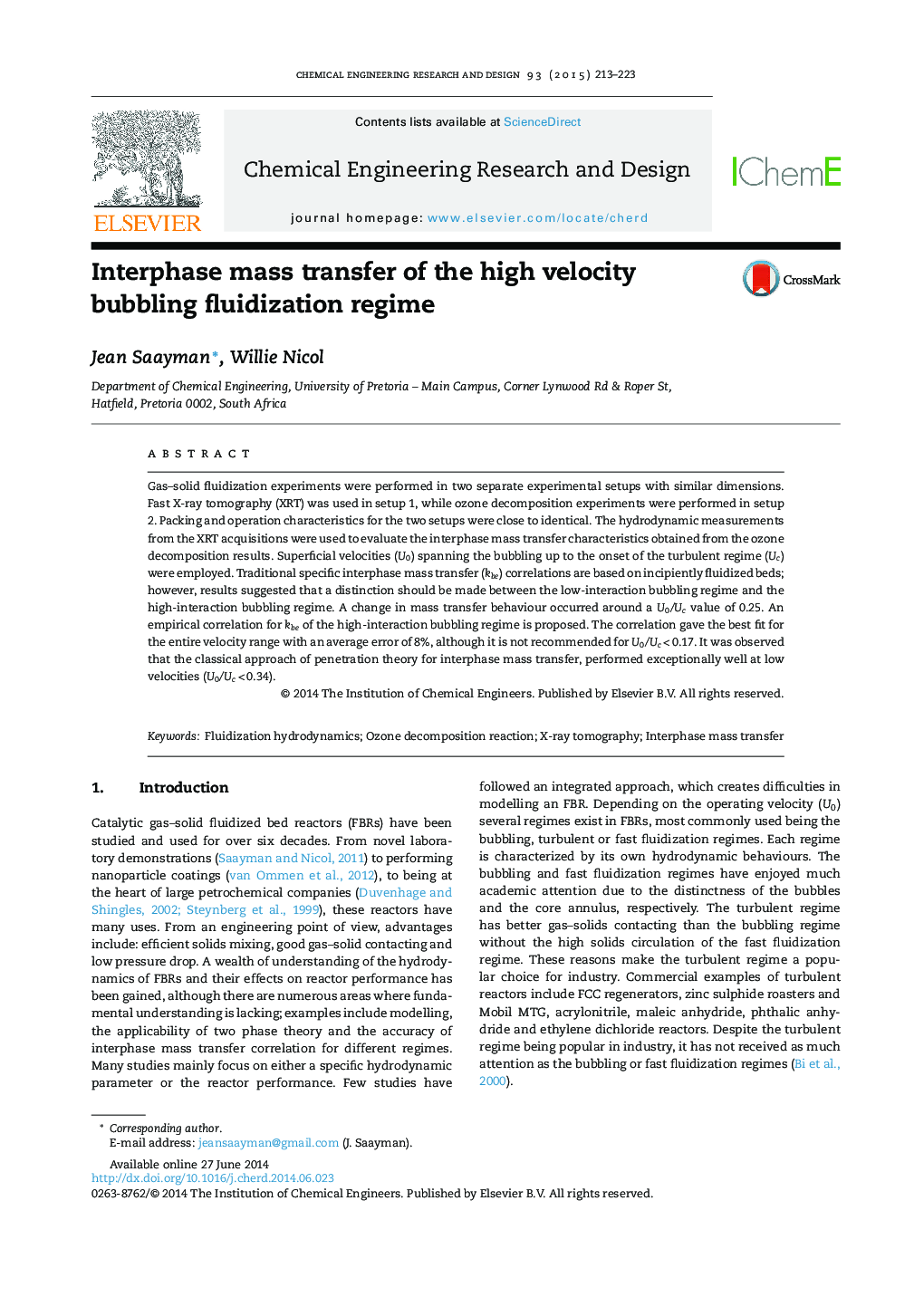| Article ID | Journal | Published Year | Pages | File Type |
|---|---|---|---|---|
| 7007464 | Chemical Engineering Research and Design | 2015 | 11 Pages |
Abstract
Gas-solid fluidization experiments were performed in two separate experimental setups with similar dimensions. Fast X-ray tomography (XRT) was used in setup 1, while ozone decomposition experiments were performed in setup 2. Packing and operation characteristics for the two setups were close to identical. The hydrodynamic measurements from the XRT acquisitions were used to evaluate the interphase mass transfer characteristics obtained from the ozone decomposition results. Superficial velocities (U0) spanning the bubbling up to the onset of the turbulent regime (Uc) were employed. Traditional specific interphase mass transfer (kbe) correlations are based on incipiently fluidized beds; however, results suggested that a distinction should be made between the low-interaction bubbling regime and the high-interaction bubbling regime. A change in mass transfer behaviour occurred around a U0/Uc value of 0.25. An empirical correlation for kbe of the high-interaction bubbling regime is proposed. The correlation gave the best fit for the entire velocity range with an average error of 8%, although it is not recommended for U0/Uc < 0.17. It was observed that the classical approach of penetration theory for interphase mass transfer, performed exceptionally well at low velocities (U0/Uc < 0.34).
Related Topics
Physical Sciences and Engineering
Chemical Engineering
Filtration and Separation
Authors
Jean Saayman, Willie Nicol,
